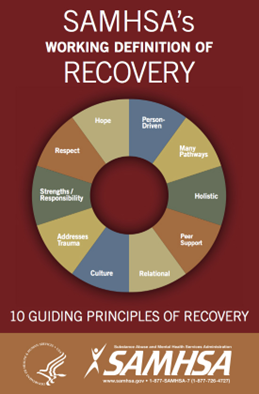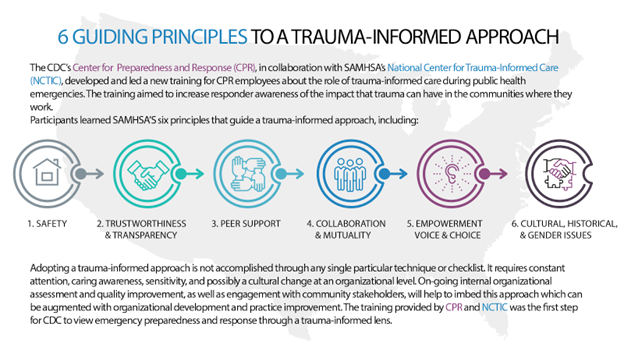Home > PTTC Post Article - September 2023
Author: Cele Fichter-DeSando, MPM
Recovery capital has a contagious quality. It is time we all became its carriers.- William White
Most people with substance use problems can and do recover. According to the 2021 National Survey on Drug Use and Health, 7 in 10 (72.2 percent or 20.9 million) adults who ever had a substance use problem considered themselves to be recovering or in recovery (HHS, 2023). A peer-reviewed study co-authored by Dr. John Kelly in 2017 reported that almost 22.3 million Americans, more than 9% of adults, use traditional and non-traditional means to live in recovery after some form of substance-use disorder. The authors suggest increasing the resources, community-based options, and opportunities available to support long-term recovery (Kelly et al., 2017).
More than 20 years ago, William Cloud and Robert Granfield used the term “recovery capital” to describe the internal and external resources available to establish and maintain an individual’s recovery. Personal, family/social, and community resources are integral parts of recovery capital and include but are not limited to access to healthcare, supportive relationships, work/school, self-confidence/self-efficacy, and safe housing (White, W. & Cloud, W., 2008). Recent research on recovery capital conducted by David Best and Emily Hennessy recommends more rigorous and systemic conceptual and empirical development to further the research, practice, policy, and growth of recovery capital (Best and Hennessy, 2022).
Increasing the research, resources, and practice of facilitating and supporting recovery requires a clearer understanding of recovery. The Substance Abuse Mental Health Services Administration (SAMHSA) developed a working definition of recovery to describe recovery “as a process of change through which individuals improve their health and wellness, live a self-directed life, and strive to reach their full potential” and outlines Guiding Principles of Recovery to assist communities and organizations in understanding, facilitating, and supporting recovery (SAMHSA, 2012). The working definition of recovery and the guiding principles continue to be used as the foundation for new resources.

Each September, Recovery Month is celebrated to promote and support new evidence-based treatment and recovery practices. The month-long celebration highlights and celebrates the individuals who make up the recovery community and the service providers and communities who support recovery and help to build recovery capital.
“Every Person. Every Family. Every Community.” is the permanent tagline for Recovery Month. The preface of the 2023 Recovery Month Toolkit states that Recovery is for everyone because it benefits everyone. In recovery, we build new connections to ourselves, our families, and our communities. The Recovery Month tagline, “Recovery is for Everyone: Every Person, Every Family, Every Community” reminds people in recovery and those who support them, that recovery belongs to all of us. We are all called to end gatekeeping and welcome everyone to recovery by lowering barriers to recovery support, creating inclusive spaces and programs, and broadening our understanding of what recovery means for people with different experiences” (Faces and Voices of Recovery, 2023). In recovery, we build new connections to ourselves, our families, and our communities. Recovery Month is not an isolated set of events or activities to be used only in September. Recovery is an ongoing process. Facilitating and supporting recovery are ongoing processes as well. By asserting that recovery is for everyone, we reduce stigma and provide opportunities for communities to strengthen and heal. Recovery Month educates others about recovery from mental health, substance use, and co-occurring disorders, the effectiveness of treatment and recovery support services, and that recovery is possible. Raising recovery capital involves a systematic approach involving every person, every family, and every community. Several new resources are available to assist individuals, organizations, and communities in celebrating recovery month and raising recovery capital.
The National Council for Mental Wellbeing – with support from the Centers for Disease Control and Prevention – developed Enhancing Harm Reduction Services in Health Departments: Harm Reduction Vending Machines (HRVMs), an educational brief grounded by real-world experience. On Tuesday, Sept. 19, 1:30-3 p.m. ET- a webinar will be held to hear the stories of people in the field who have successfully implemented HRVMs in their harm reduction programs.
In June 2023, SAMHSA released TIP 64: Incorporating Peer Support Into Substance Use Disorder Treatment Services to offer guidance on incorporating peer workers and the services they provide directly into SUD treatment and supportive programs. It also discusses how SUD treatment providers and program administrators can collaborate with community-based Peer Support Services and successfully link individuals and families to these services to support ongoing recovery from SUDs.
SAMHSA developed a Digital Therapeutics Advisory to identify the digital health interventions that have an evidence base for both treating and managing mental health conditions and substance use disorders and also recognize and address barriers to access. Digital therapeutics are defined and reviewed along with research, regulatory, and reimbursement considerations.
Released in 2023, the SAMHSA Practical Guide for Implementing a Trauma-Informed Approach is a practical guide that builds on SAMHSA's Concept of Trauma and Guidance for a Trauma-Informed Approach and TIP 57 Trauma-Informed Care in Behavioral Health Services developed in 2014 and is written in coordination with the federal Interagency Task Force for Trauma-Informed Care. Intended for anyone involved in organization-level change, including practitioners, state and local officials, policymakers, and federal and non-federal funders, the primary goals of the guide are to:

The Recovery Month Website developed by the Faces and Voices of Recovery provides the 2023 Recovery Month Toolkit, information about recovery, downloadable logos, social media graphics, and resources to use in recovery month events and beyond.

Best, D., & Hennessy, E. A. (2022). The science of recovery capital: where do we go from here? Addiction (Abingdon, England), 117(4), 1139–1145. https://doi.org/10.1111/add.15732
Kelly, J. F., Bergman, B., Hoeppner, B. B., Vilsaint, C., & White, W. L. (2017). Prevalence and pathways of recovery from drug and alcohol problems in the United States population: Implications for practice, research, and policy. Drug and alcohol dependence, 181, 162–169. https://doi.org/10.1016/j.drugalcdep.2017.09.028
Faces and Voices of Recovery, 2023. 2023 Recovery Month Toolkit. Faces and Voices of Recovery, 2023. https://rm.facesandvoicesofrecovery.org/downloads/
Substance Abuse and Mental Health Services Administration. (2023). Incorporating Peer Support Into Substance Use Disorder Treatment Services. Treatment Improvement Protocol (TIP) Series 64. Publication No. PEP23-02-01-001. Rockville, MD: Substance Abuse and Mental Health Services Administration, 2023.
Substance Abuse and Mental Health Services Administration. (2023). Practical Guide for Implementing a Trauma-Informed Approach. SAMHSA Publication No. PEP23-06-05-005. Rockville, MD: National Mental Health and Substance Use Policy Laboratory. Substance Abuse and Mental Health Services Administration, 2023.
Substance Abuse and Mental Health Services Administration. (2023). SAMHSA Announces National Survey on Drug Use and Health (NSDUH) Results Detailing Mental Illness and Substance Use Levels in 2021. Content created by Substance Abuse and Mental Health Services Administration (SAMHSA) Content last reviewed January 4, 2023.
SAMHSA Announces National Survey on Drug Use and Health (NSDUH) Results Detailing Mental Illness and Substance Use Levels in 2021 | HHS.gov
Substance Abuse and Mental Health Services Administration. (2012). SAMHSA’s working definition of recovery: 10 guiding principles of recovery. https://store. samhsa.gov/sites/default/files/d7/priv/pep12-recdef. pdf
White, W. & Cloud, W. (2008). Recovery capital: A primer for addictions professionals. Counselor, 9(5), 22-27.